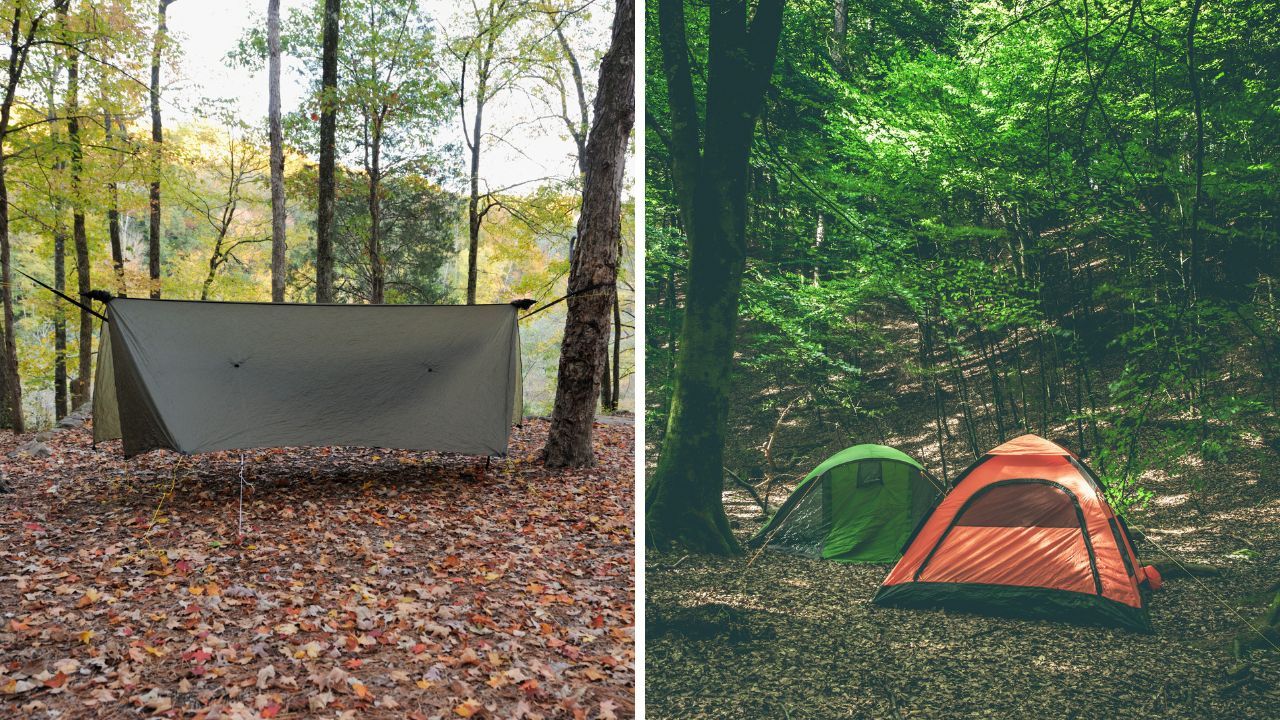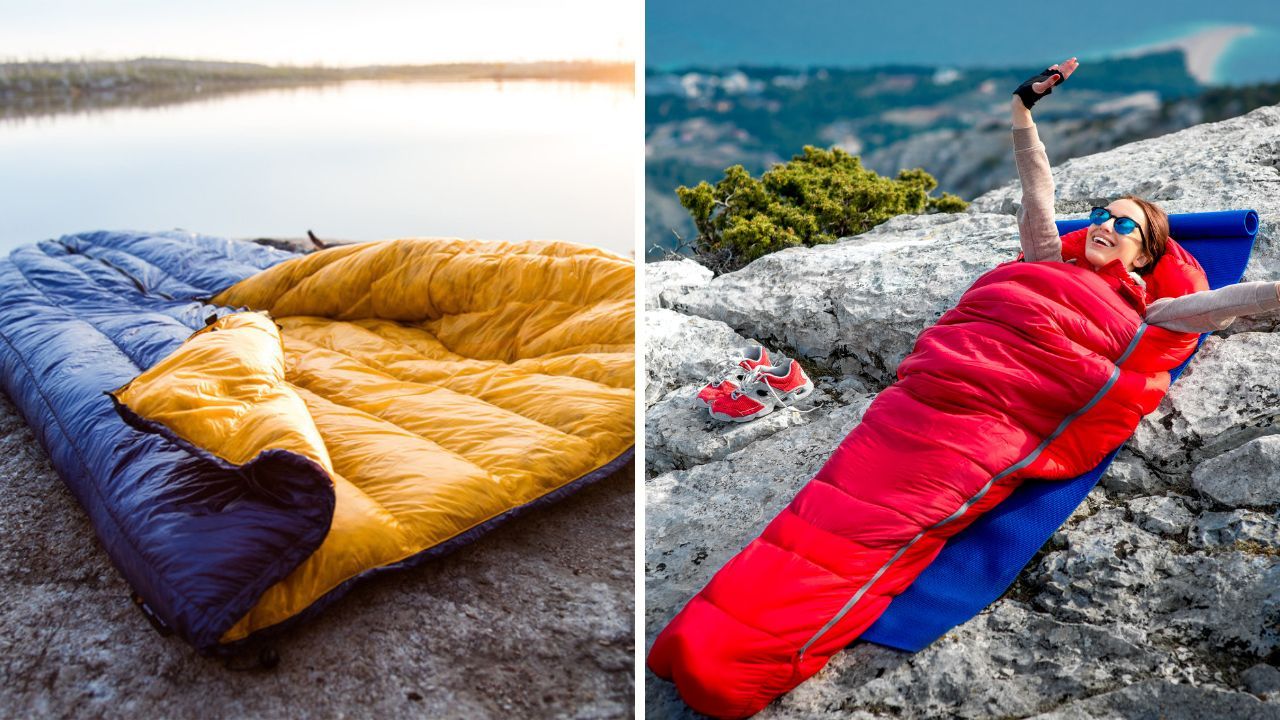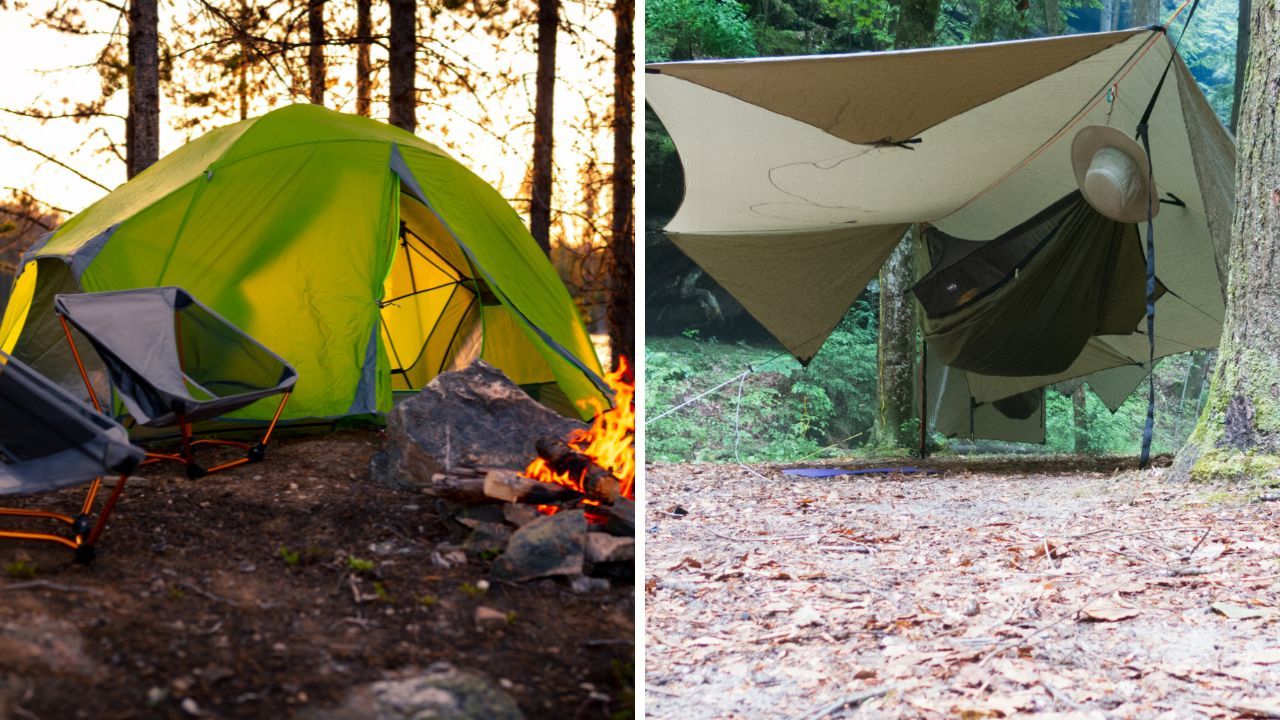
Tent vs Hammock | Which One Wins for Camping?
Choosing between a Tent vs Hammock for your camping trips? We break down the essentials to help you camp with confidence!
You're about to embark on an exciting journey into the world of camping, and I'm here to guide you through a crucial decision: tent vs hammock.
This isn't just about choosing a place to sleep; it's about selecting a home away from home, where you'll recharge after a day of adventure.
Whether you're planning to hike up misty mountains or relax by a tranquil lakeside, the right camping gear can make or break your experience.
So, let's dive into what makes tent and hammock camping different, and more importantly, which might be the best fit for you.
Key Takeaways
- Whether to choose a tent or a hammock depends on factors like environment, comfort preferences, and camping style.
- Tents offer more space, privacy, and protection from the elements, making them suitable for a variety of terrains and weather conditions.
- Hammocks are lighter and ideal for uneven terrain, but require trees for setup and may not provide as much warmth in cold weather.
- Consider personal sleeping habits, safety needs, and the specific requirements of your camping location when making your choice.
The Basics of Tent and Hammock Camping
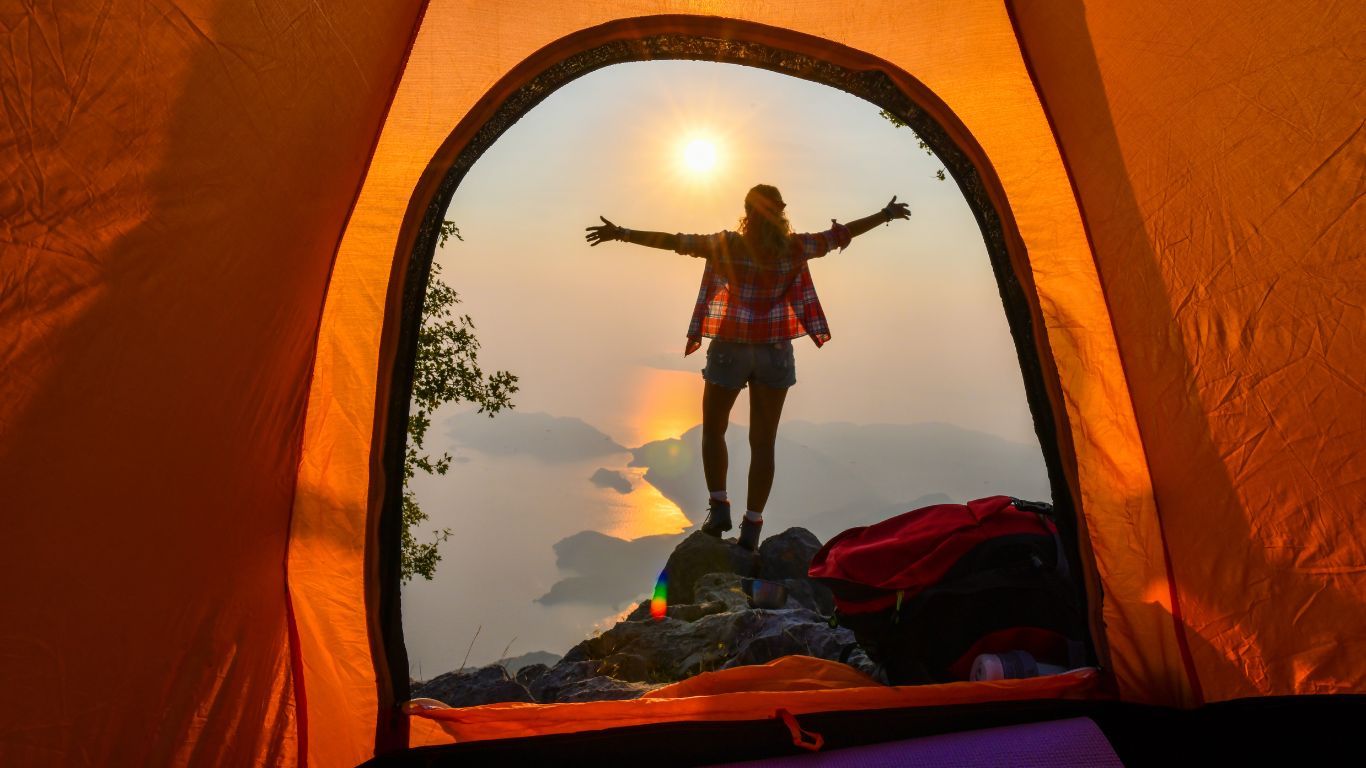
Tent Camping Essentials
Think of tent camping as the classic choice – it's been around for ages and for good reason. Tents offer a familiar shelter, a little cocoon of privacy in the great outdoors.
But it's not just about popping a tent anywhere. It's about understanding and mastering its components.
Key Components
- Tent Poles: These are the skeleton of your tent. They need to be sturdy yet flexible, capable of withstanding wind and weather.
- Rain Fly: Ever woken up to the gentle patter of rain? That's when a rain fly becomes your best friend. It's an extra layer that keeps you dry and cozy.
- Sleeping Bags: Did you know the design of a sleeping bag can influence your body temperature? Choose one based on the climate you're exploring.
- Sleeping Pad: This isn't just about comfort; it's about insulation. A good sleeping pad keeps the cold ground from sapping your body heat.
Benefits:
- Privacy and Protection: A tent is your personal fortress. It shields you from insects, wind, and prying eyes.
- Family-Friendly: Tents come in various sizes, accommodating solo travelers or whole families.
- Storage Space: You'll have room for your gear, which is great for longer stays.
Challenges:
- Finding the Perfect Spot: Uneven ground? Rocky terrain? You'll need to scout for a flat, soft area.
- Set-Up Time: Some tents can be tricky and time-consuming to set up, especially for beginners.
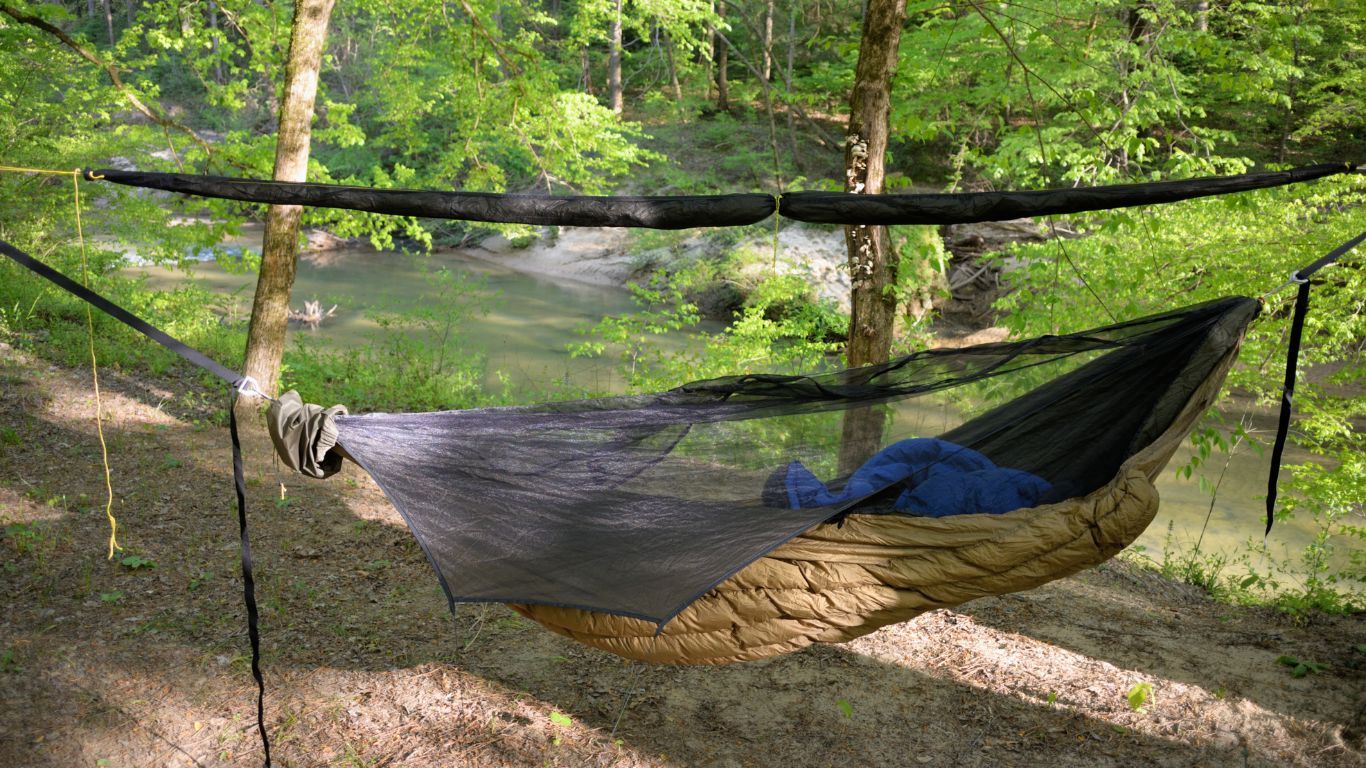
Hammock Camping Overview
Now, let's swing over to hammock camping. It's been gaining popularity among those who crave a lightweight and unique outdoor sleeping experience. Imagine dangling gently between two trees, under a starlit sky – that's hammock camping for you.
Hammock Camping Setup
- Hammock Setup: It's not just about tying a hammock between trees. You need the right angle, height, and tension for a comfortable sleep.
- Tree Straps: These are a hammock's best friend. They protect the tree bark and provide a strong, adjustable connection.
- Hammock Accessories: From bug nets to rain tarps, there's a range of add-ons to enhance your hammock experience.
Advantages:
- Leave No Trace: Hammocks are kind to the environment. They don’t require a clear, flat area, which means less disturbance to the natural setting.
- Elevated Sleep: Being above the ground keeps you away from dampness and crawling critters.
Drawbacks:
- Dependent on Trees: No trees? No hammock. You're limited to areas where you can safely and responsibly hang your hammock.
- Exposure to Elements: While some hammocks come with weather-proofing, they generally offer less protection than tents.
Whether you're leaning towards the classic tent setup or the adventurous hammock option, remember, the best choice is the one that aligns with your needs and the nature of your trip.
Detailed Comparison – Tent vs Hammock
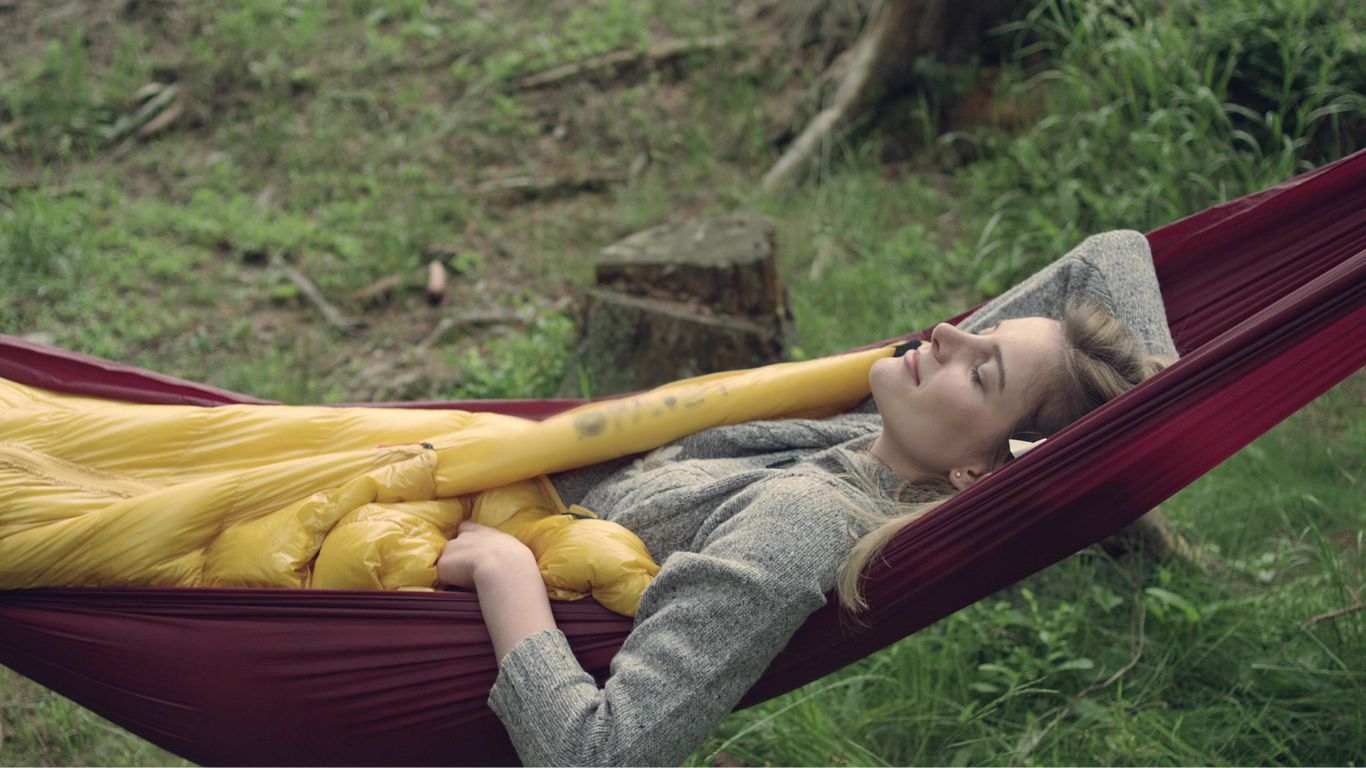
Comfort and Sleep Quality
Now let's talk comfort. You might think a hammock wins hands down for comfort, but it's not that simple.
In a tent, your sleeping bag and pad combo is crucial. The pad isn't just for cushioning; it's an essential barrier against the ground's chill.
And your sleeping bag? Opt for a shape that suits your sleep style - mummy bags for the curlers and rectangular for the sprawlers.
In a hammock, it's a different ball game. You're suspended in air, which is great for comfort but tricky for warmth. You might think you're cocooned, but air circulates under you, leading to a 'cold butt syndrome'.
Solve this with an underquilt or a specialized sleeping pad. And remember, sleeping in a hammock means adopting the diagonal lay – it's the secret to a flat, comfy sleeping position.
According to the National Sleep Foundation, adults need 7-9 hours of sleep, even when camping. So, pick your gear wisely!
Setup and Convenience
Setting up a tent can range from a five-minute pop-up job to a 20-minute puzzle, depending on the model.
Key tips? Practice at home, choose a flat spot, and don't forget to stake it down - a flyaway tent is no joke in windy conditions.
Hammocks are typically quicker to set up. Just find two trees about 12-15 feet apart, attach your tree straps, and hang your hammock with a nice sag. Remember, too tight is not right - it'll be uncomfortable and can stress the fabric.
Factors like Wet Weather, Level Ground, and Finding a Suitable Campsite
In wet weather, a tent with a robust rain fly is a sanctuary. Hammocks can be trickier; you'll need a large rain tarp and skillful positioning to both stay warm and dry.
Finding the perfect campsite is about balance. For tents, look for level, soft ground, free of rocks and roots. Hammocks need sturdy trees at the right distance apart and in a spot that respects local regulations and environmental considerations.
Portability and Weight Considerations
If you're trekking, weight and space are gold. Hammocks are the kings of lightweight travel.
And in terms of space? Hammocks can compress into a small stuff sack, taking up minimal backpack real estate.
Comparison of Packing Sizes (Stuff Sack Dimensions, etc.)
The average stuff sack for a hammock system can be as small as a grapefruit, while a tent's packing size is typically larger, more like a loaf of bread. This can make a huge difference when you're packing for a multi-day hike.
Remember, the key is to match your gear to your adventure. Are you hiking long distances, or is your car just a few steps away? Are you a restless sleeper or a 'sleep-like-a-log' kind? Your answers will guide your choice between a tent and a hammock.
Special Considerations in Different Environments
Alright, let's get into the nitty-gritty of how tents and hammocks fare in different environmental scenarios. It's not just about comfort; sometimes, it's about survival.
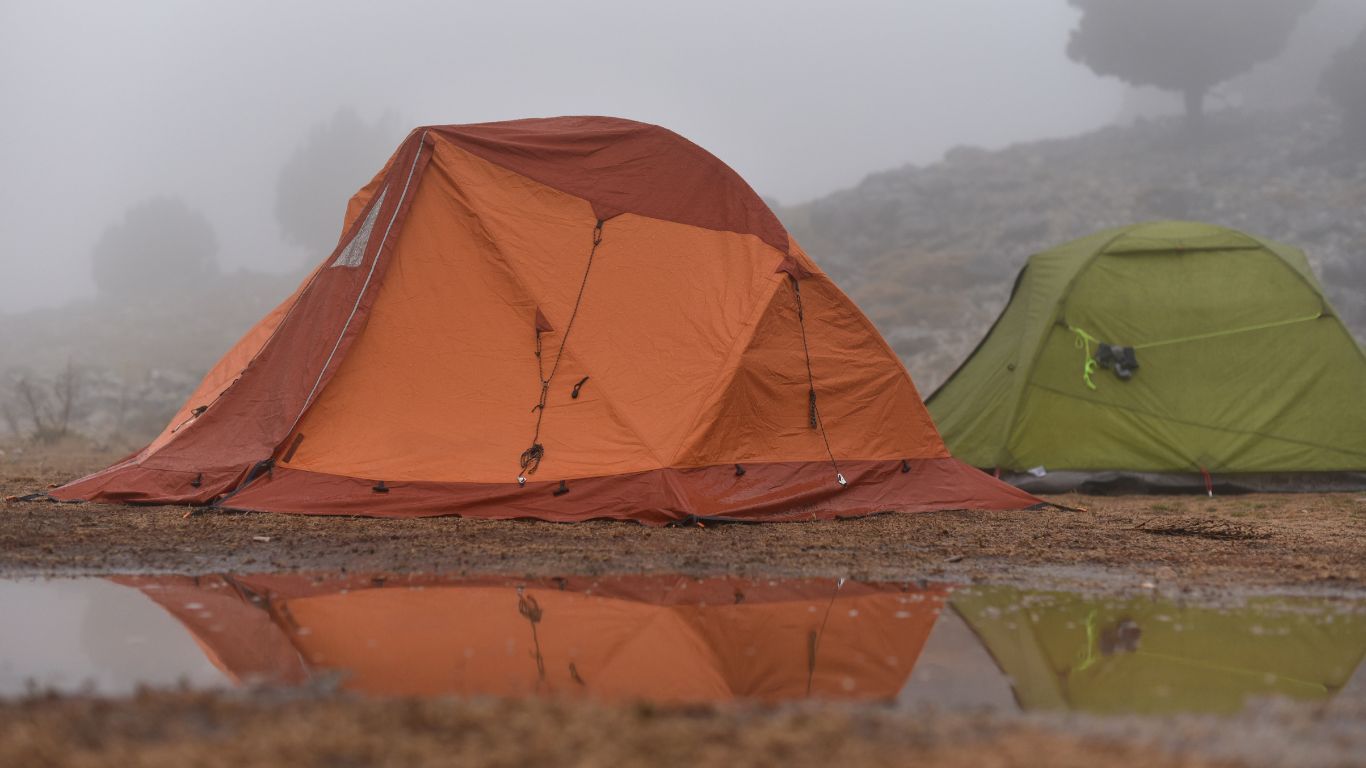
Weather Adaptability
First up, rain. If you're in a tent, a good rainfly is like an umbrella for your sleeping quarters. It should extend beyond the tent's edges to prevent rain from seeping in. And don't forget to check that the tent floor has a solid waterproof rating – think of it as your moat against the soggy ground.
In a hammock, staying dry is all about the rain tarp. It needs to be larger than the hammock itself, providing ample coverage on all sides.
Staying Warm: Insulation in Hammocks vs Tents
Now, let's talk cold. In a tent, your battle against the cold starts with a quality sleeping bag and an insulated pad. The pad is crucial – it insulates you from the ground, which can suck away your body heat faster than the air.
That's where underquilts come in. They hang snugly below your hammock, providing uninterrupted insulation.
According to a study from the University of Southampton, using an underquilt can retain significantly more heat, ensuring a warmer night's sleep.
Geographical Factors
Choosing between a tent and a hammock can also depend on where you're setting up camp.
- Tents require relatively flat and clear ground. You're looking for a spot that's level, free of rocks, roots, and ideally, above any flood lines.
- Hammocks, on the other hand, need sturdy trees the right distance apart. They're great for rocky or uneven ground where finding a flat spot for a tent would be a nightmare. But, no trees? No hammock.
Hammock and Tent Use in Popular Locations like the Appalachian Trail
Take the Appalachian Trail, for instance. It's a mix of terrains, from dense forests perfect for hammocks to elevated, treeless areas where a tent is your only option.
Remember, your choice isn't just about personal comfort; it's about adapting to the environment you're exploring. Whether you're hanging between trees or pitched on a peak, your shelter can make all the difference in your outdoor adventure.
Personal Preference and Specific Needs
Let's get personal. Because, let's face it, when you're in the great outdoors, your comfort and peace of mind are what matter most.
This section is all about how your personal quirks and needs can guide your choice between a tent and a hammock.
Individual Comfort and Space
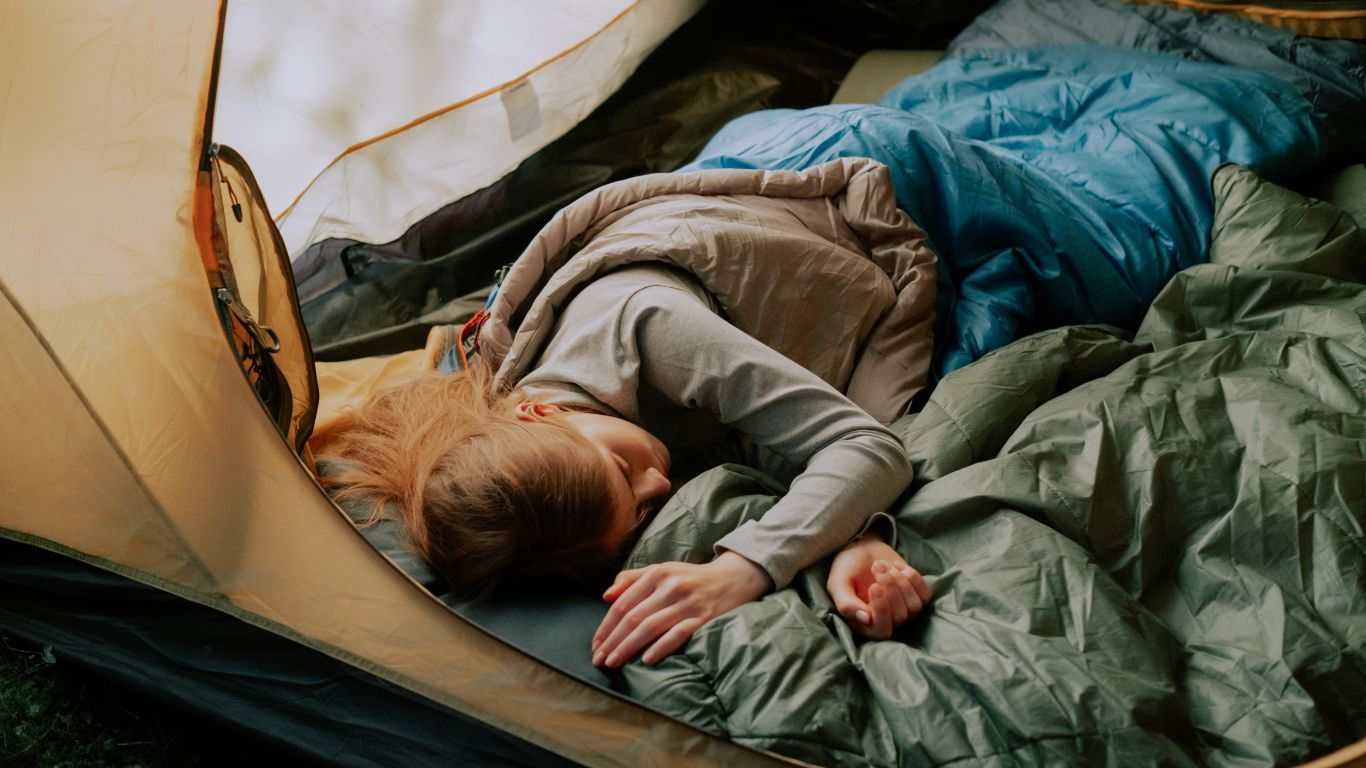
Sleeping Positions
Are you a starfish sleeper, or do you curl up like a cat?
In a tent, you've got the space to sprawl or curl up. Tents offer a familiar, flat surface similar to your bed at home. And if you're camping with a partner, a two-person tent gives you both enough space to find your comfortable spot without feeling cramped.
Now, hammocks. They might look like they're made for back sleepers, but you can actually sleep on your side in them too. The trick is to lie diagonally. This opens up the hammock and allows for a flatter lying position.
But, if you're a stomach sleeper, a hammock might not be your best friend.
Personal Preference in Camping
Let's talk about privacy and that sense of security.
Tents are like your mini-home. You zip up the door, and you're in your own little world. It's just you and your camping buddy, if you have one. This can be really comforting, especially in unfamiliar wilderness.
And then, there's the height factor. If you're not a fan of heights, even the few feet off the ground in a hammock can be daunting. It's all about what makes you feel safe and comfortable.
Safety and Protection
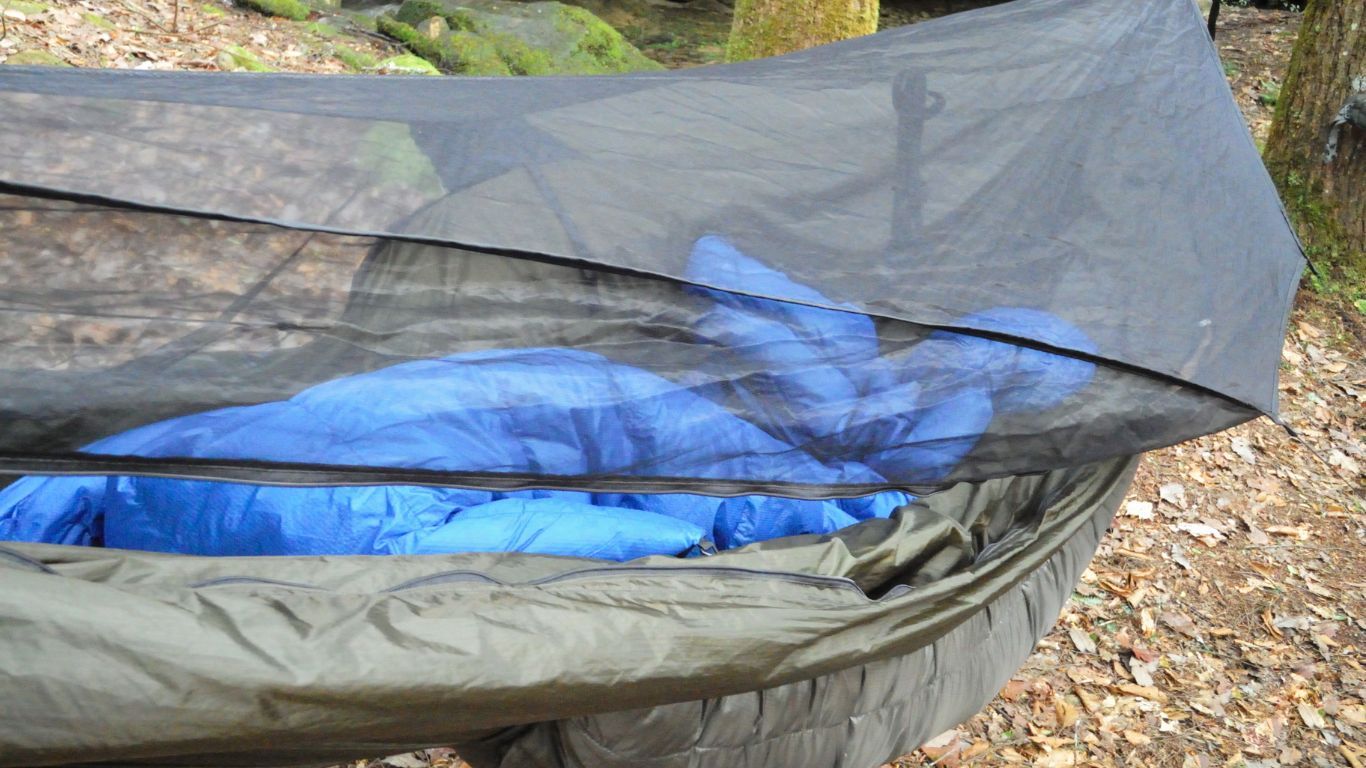
Protection from Insects
Nothing ruins a camping trip like waking up covered in bug bites. In a tent, you're pretty much in a bug-proof fortress, especially with a good mosquito netting over the door and windows.
In a hammock, you're more exposed, but don't worry, there's a solution, a bug net.
Most camping hammocks come with built-in bug nets, or you can add one. Just make sure it's tightly secured to keep those pesky mosquitoes out.
>>RELATED Best Camping Hammock With Mosquito Net: Stop The Bite!
Security Considerations
When it comes to wildlife, both tents and hammocks offer protection, but remember, it's more about how you camp than what you camp in. Keep your food stored safely away from your sleeping area, and you're likely to avoid any curious critters.
And theft? Well, in a busy campground, a tent might feel more secure because you can lock it with a small padlock.
In a hammock, you're a bit more open to the world, which can be a vulnerability in some places.
So, there you have it. Think about how you sleep, what makes you feel safe, and how you like to experience the great outdoors. These personal preferences are key in deciding whether to go for a tent or hammock.
Additional Gear and Accessories
Alright, you're almost ready to venture out into the wild, but before you do, let's chat about some extra gear and accessories that can elevate your next camping trip and experience from good to fantastic.
Enhancing Comfort
- Sleeping Pad: Whether you're in a tent or a hammock, a good mat is a game-changer. It adds that extra layer of cushion and insulation. For hammock campers, this might be swapped out for an under quilt, but the principle remains the same: comfort and warmth.
>>RELATED Best Air Mattress for Camping
- Quality Hammocks: If you're going the hammock route, don't skimp on quality. Look for durable materials, strong stitching, and a size that suits your body for the best sleep in the air.
- Freestanding Tents: For tent campers, a freestanding tent can be a blessing. They're easier to set up and more versatile since you don't need to anchor them down with stakes. Perfect for when you find that dreamy but hard-to-stake spot.
Essential Accessories for Camping
- Repair Kits: Be prepared. A kit for patching up a tent or fixing a hammock can save your trip.
- Trekking Poles: Not just for hiking! They can double as tent poles for some ultralight tents.
- Guy Lines and Webbing Straps: Extra stability for your tent or hammock. They can make a world of difference in windy conditions.
Frequently Asked Questions
Is a tent better than a hammock?
Choosing between a tent and a hammock depends on your camping needs. Tents offer more space and protection but are heavier to carry. While a hammock sleep system is lighter and good for uneven ground, but requires trees to setup.
Is a tent better than a hammock in cold weather?
In cold weather, a tent is often better than a hammock. Tents protect you more from the cold ground and wind. Hammocks can get chilly as cold air moves under them.
What are the disadvantages of hammock camping?
Hammock camping needs trees to set up and might not keep you as warm as a tent. It can be less comfortable for sleeping on your side or stomach. Hammocks also offer less space and privacy than tents.
Is it OK to sleep in a hammock while camping?
Yes, it's OK to sleep in a hammock overnight while camping. Hammocks can be comfy and are good for sleeping off the ground. Just make sure it's set up safely and you're warm enough.
Additional Resources
- Good forum discussion here: https://rokslide.com/forums/threads/tent-vs-hammock.214636/
- Another forum on Reddit will give you a good take: https://www.reddit.com/r/CampingGear/comments/apjhhr/tent_vs_hammock_camping/
- rei.com has some good gear to get started hammock camping.
- If you're new to camping, there are plenty of beginner-friendly resources online. Look up "first hammock camping trip tips" or "tent camping basics" for some great advice.
Remember, whether you're suspended between two trees or cozied up on the ground, the magic of camping lies in connecting with nature, enjoying the great outdoors, and making memories.
So, tent or hammock? The choice is yours – make it a good one! Happy camping!
Before You Go...
